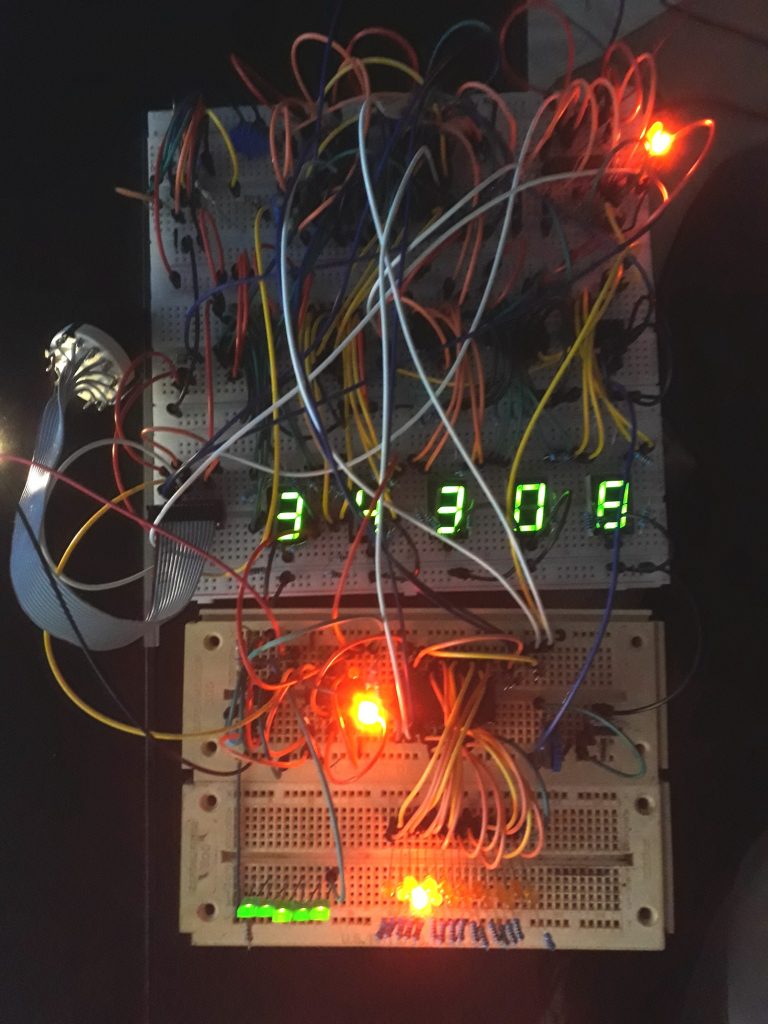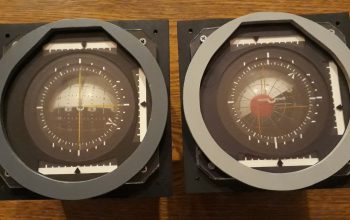Entry Monitor System (EMS) – Part 2
Now that I had the countdown displays working, I really wan’t content with not simulating any other aspect of the EMS. I could simulate the orientation lights fairly easily, but how could I simulate the scrolling graph? I really didn’t want to create a motorized assembly that would really scroll an 8-foot-long piece of mylar, and besides, I would not want to use a scribe because I would have to replace the mylar after every simulation.
I took my cue from the movie “Apollo 13” and the scene in the simulator where Jack Swigert (Kevin Bacon) was watching the EMS, got a false corridor indicator light, and went to manual. On that EMS, instead of a scribe, there was a small light. Actually moving the light would still involve motors or servos, so I came up with the idea of using a CD4514 16-line decoder to light 16 LEDs one at a time. Since the lack of movement would be immediately apparent, I had the LED flash slowly, and the CD4514 would change only while the LED was off.
I added a 555 and a CD4011 quad NAND gate to provide some timing and logic for the slow blink and enabling the inputs to the CD4514 during the dark phase. I had a couple of extra gates left, so I used them to control some LEDs that would eventually become the corridor indicator lights (one for “heads up” and one for “feet up”). I connected the inputs to the corridor input gates as well as the CD4514 to various outputs from the counters and the 7-segment displays so that the pattern of LED changes wan’t sequential or obvious. A few more diodes added to the matrix connected the new circuitry to the rotary switch, along with an LED that will eventually be the backlight for the orientation gauge and some LEDs that will be the backlight for the graph display. A few tests (and some reconnection of the 16 LEDs to further randomize the pattern), and the circuit is working great!

(Photo: Apollo Education Experience Project)
Meanwhile, Marc Tessier of S&T Geotronics ( www.stgeotronics.com ) has cut a few more acrylic panels, including the overlay for the EMS. Once the circuitry, mounting, and faceplate are done, this will mount over it all, giving it a truly accurate look.

(Photo: Apollo Education Experience Project)



